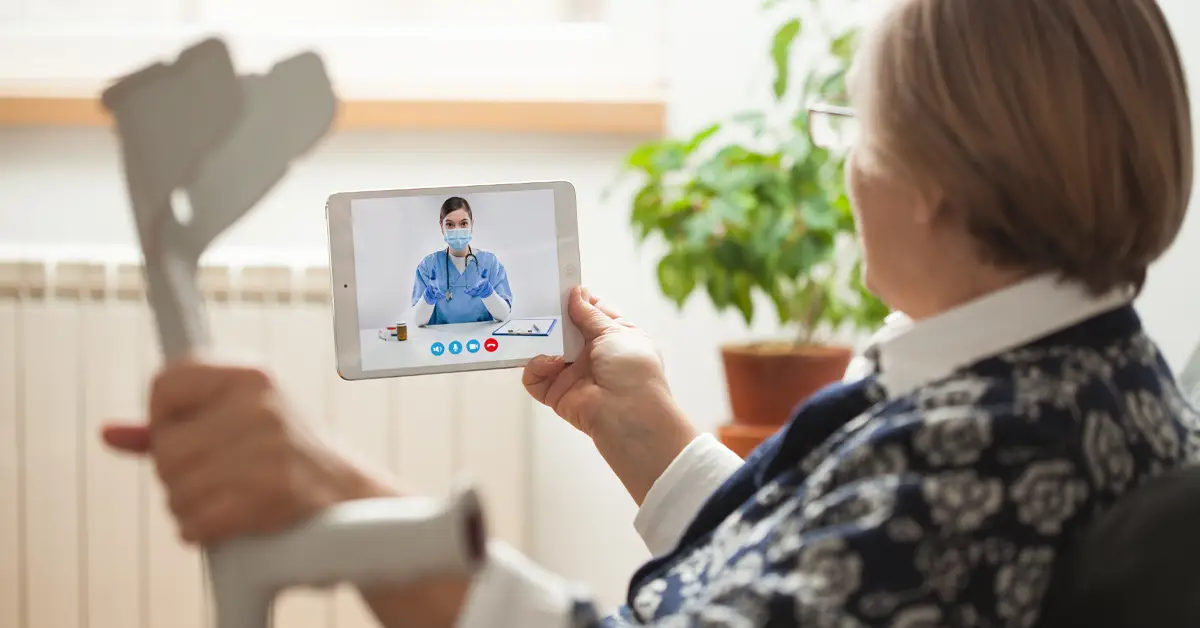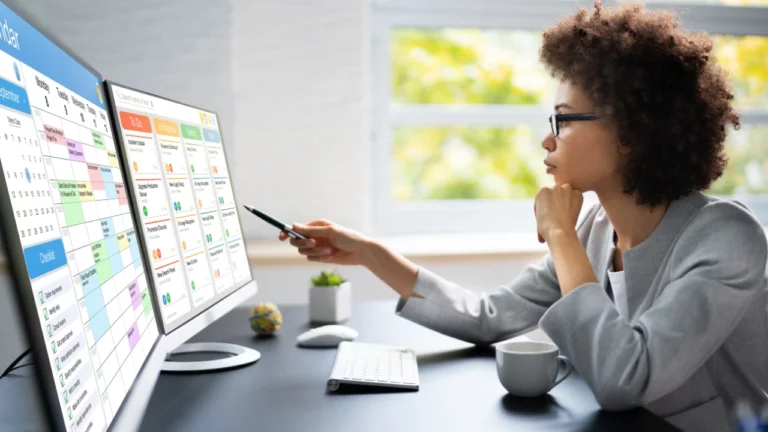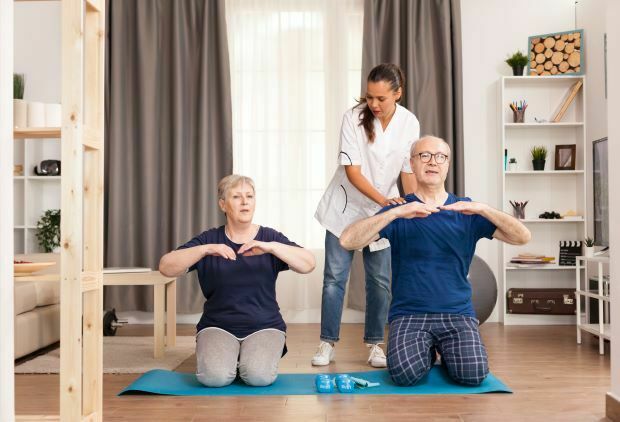Telehealth and Remote Patient Monitoring (RPM) are two technologies that have revolutionized the way healthcare is delivered in the modern era. Telehealth is the use of electronic information and communication technologies to provide health-related services remotely, such as virtual consultations, remote monitoring, and patient education.
Remote Patient Monitoring (RPM), on the other hand, refers to the use of medical devices and technology to collect and transmit health data from patients in their homes to healthcare providers for monitoring and interpretation. Together, telehealth and RPM have the potential to improve healthcare delivery, patient outcomes, and reduce the need for in-person visits.
In this article, we will explore how telehealth and RPM work together, the benefits they offer, and their potential impact on the future of healthcare.
Telehealth and RPM: The Perfect Combination
Telehealth and RPM work together to provide a comprehensive approach to healthcare delivery. Telehealth technologies, such as video conferencing and remote patient portals, allow healthcare providers to communicate with patients remotely, providing virtual consultations and patient education.
On the other hand, RPM technologies, such as wearable devices and remote monitoring systems, allow healthcare providers to collect and securely transmit vital health data from patients in their homes to the providers and their medical care teams. This data can then be used to monitor and efficiently manage chronic conditions, such as diabetes, heart disease, and hypertension.
Benefits of Using Telehealth and RPM
The combination of telehealth and RPM offers a number of benefits for both patients and healthcare providers. For patients, telehealth and RPM can improve access to healthcare, reduce the need for in-person visits, and enhance the self-management of chronic conditions by empowering patients.
For healthcare providers, telehealth and RPM can improve the efficiency of care delivery, increase patient engagement, and reduce healthcare costs. Additionally, telehealth and RPM can improve the continuity of care, allowing healthcare providers to closely monitor patients’ health data and respond quickly to changes in their condition.
Examples of How Telehealth and RPM are Being Used in Healthcare
Telehealth and RPM are being used in a variety of healthcare settings to improve care delivery and patient outcomes. For example, telehealth and RPM are being used to remotely monitor patients with chronic conditions such as diabetes, heart disease, and hypertension. In these cases, patients are provided with monitoring devices and instructed on how to use them to collect vital health data, such as blood pressure, glucose levels, and heart rate.
This data is then transmitted to healthcare providers for monitoring and interpretation. Additionally, telehealth and RPM are being used to provide virtual consultations for patients in rural and remote areas, where access to healthcare is limited.
Monitoring Devices and Systems
Types of Monitoring Devices and Systems
Telehealth and RPM rely on a range of monitoring devices and systems to collect and transmit vital health data from patients. Some examples of monitoring devices and systems include:
- Wearable devices: These are often small, portable devices that can be worn on the body to monitor vital signs such as heart rate, activity levels, and sleep patterns. Examples include smartwatches, fitness trackers, and activity monitors.
- Remote monitoring systems: These are electronic devices that can be placed in the home to monitor vital signs such as blood pressure, oxygen levels, and weight. Examples include blood pressure cuffs, oxygen monitors, and digital weight scales.
- Medical devices: These are specialized devices used for specific medical conditions such as diabetes, heart disease, and hypertension. Examples include glucose meters, electrocardiogram (ECG) monitors, and spirometers.
How Monitoring Devices and Systems are Used in Telehealth and RPM
Monitoring devices and systems are used in telehealth and RPM to collect and transmit vital health data from patients in their homes to healthcare providers for monitoring and interpretation.
For example, patients with diabetes may use a glucose meter to regularly check their blood sugar levels, and then securely transmit this data to their healthcare provider for monitoring and analysis. Similarly, patients with heart disease may use an ECG monitor to monitor their heart rate and securely transmit this data to their healthcare provider for interpretation.
The Role of Medical Devices in Telehealth and RPM
Medical devices play a crucial role in telehealth and RPM by providing healthcare providers with accurate and real-time health data from patients. This health data allows healthcare providers to closely monitor patients’ health and quickly respond to any changes in their condition. Additionally, medical devices can also be used to provide patients with self-management tools and resources to help them better manage their chronic condition.
For example, a patient with hypertension may be provided with a blood pressure cuff and instructed on how to use it to monitor their blood pressure at home and record it in a secure online patient portal. This data can then be reviewed by the healthcare provider to adjust medication or treatment plans as needed.
The Importance of Monitoring Devices and Systems in Telehealth and RPM
Monitoring devices and systems are an essential component of telehealth and RPM. They provide healthcare providers with real-time and accurate health data, which can be used to improve patient care and outcomes. Without monitoring devices and systems, telehealth and RPM would not be able to provide the same level of care and support to patients with chronic conditions.
The Future of Monitoring Devices and Systems in Telehealth and RPM
Monitoring devices and systems are continually evolving and improving, and their integration into telehealth and RPM is expected to increase in the future. New devices and systems are being developed that can collect more data and provide more insights into patient health.
Additionally, advancements in artificial intelligence and machine learning are expected to allow for more accurate and personalized monitoring and treatment plans.
Chronic Condition Management
Chronic conditions, such as diabetes, heart disease, and hypertension, are a major public health concern, accounting for a significant portion of healthcare costs and morbidity. Effective management of chronic conditions is essential for improving patient outcomes and reducing healthcare costs.
How Telehealth and RPM Can Improve Chronic Condition Management
Telehealth and RPM can play a crucial role in the management of chronic conditions. By providing healthcare providers with real-time and accurate health data, telehealth and RPM can help identify early signs of deterioration and allow for prompt intervention. Additionally, telehealth and RPM can improve patient engagement and self-management, which can lead to better outcomes.
Examples of How Telehealth and RPM are Being Used to Manage Chronic Conditions
Telehealth and RPM are being used in a variety of ways to manage chronic conditions. For example, telehealth and RPM are being used to remotely monitor patients with diabetes, providing healthcare providers with real-time data on glucose levels and allowing for prompt adjustments to treatment plans.
Additionally, telehealth and RPM are being used to provide virtual consultations for patients with heart disease, allowing for more frequent check-ins and adjustments to medication. Telehealth and RPM are also being used to provide patients with hypertension with remote blood pressure monitoring and provide real-time data on blood pressure.
Benefits of using Telehealth and RPM for chronic condition management
The use of telehealth and RPM for chronic condition management can lead to a number of benefits, including:
- Improved patient outcomes: Telehealth and RPM can help healthcare providers identify early signs of deterioration and intervene promptly, leading to better health outcomes for patients.
- Increased patient engagement and self-management: Telehealth and RPM can help patients become more involved in their own care and better manage their chronic condition.
- Reduced healthcare costs: Telehealth and RPM can help reduce the need for in-person visits and hospitalizations, leading to lower healthcare costs.
- Increased access to care: Telehealth and RPM can provide patients in remote or underserved areas with access to care that they otherwise would not have.
The Future of Chronic Condition Management with Telehealth and RPM
Telehealth and RPM are expected to play an increasingly important role in chronic condition management in the future. Advances in technology are expected to make telehealth and RPM more widely available and improve the quality of care provided. Additionally, as the population ages and the prevalence of chronic conditions increases, the use of telehealth and RPM is expected to become more common.
Remote Monitoring and Care Delivery
Remote monitoring and care delivery refers to the use of telehealth and RPM technologies to remotely monitor patients and provide care to them remotely, i.e. from a distant location such as their home. Remote care can include remote consultations, remote monitoring of vital signs, and remote management of chronic conditions.
Remote monitoring and care delivery can improve healthcare delivery in a number of ways. For example, it can increase access to care for patients in remote or underserved areas, reduce the need for in-person visits, and improve patient outcomes. Additionally, remote monitoring and care delivery can help healthcare providers manage patient populations more effectively and reduce healthcare costs.
Examples of Remote Monitoring and Care Delivery
Examples of remote monitoring and care delivery include:
- Remote consultations: Providing virtual consultations to patients using telehealth technologies such as video conferencing.
- Remote monitoring of vital signs: Using monitoring devices and systems to remotely collect and transmit data on vital signs such as blood pressure and glucose levels.
- Remote management of chronic conditions: Using telehealth and RPM technologies to remotely monitor and manage chronic conditions such as diabetes and hypertension.
Telehealth and RPM in Medicare
Medicare is a federal program that provides healthcare coverage for older adults and people with certain disabilities. Telehealth and RPM are becoming increasingly important in Medicare as a way to provide care for patients in remote or underserved areas, manage chronic conditions, and reduce healthcare costs.
Medicare covers a range of telehealth services, including virtual check-ins, remote evaluation of recorded video and images, and virtual communication between physicians and patients. This allows Medicare beneficiaries to receive medical treatment and consultation from the comfort of their own home.
Medicare also covers certain remote patient monitoring services, such as blood pressure monitoring and blood glucose monitoring, which allows patients to self-manage their conditions and reduce the need for in-person visits. Medicare has been expanding reimbursement for telehealth and RPM services in recent years. This allows healthcare providers to receive reimbursement for providing telehealth and RPM services to Medicare beneficiaries, making it more financially feasible for providers to offer these services.
Patient Education and Satisfaction
Patient education is an important aspect of telehealth and RPM, as it helps patients understand their condition, how to manage it, and how to use the monitoring devices and systems provided. This can help improve patient outcomes, increase patient engagement and self-management, and reduce the need for in-person visits.
Patient satisfaction with telehealth and RPM is generally high, as patients appreciate the convenience and accessibility of these services. Additionally, telehealth and RPM can help improve patient outcomes and reduce healthcare costs, which can contribute to higher levels of patient satisfaction.
Examples of patient education and satisfaction include:
- Providing patients with instructions on how to use monitoring devices and systems correctly, and helping them understand the data they are collecting.
- Providing patients with information on how to manage their condition and make lifestyle changes that can help improve their health outcomes.
- Using patient satisfaction surveys to gather feedback on the telehealth and RPM services patients are receiving, and using this feedback to improve the quality of care provided.
Revolutionizing Healthcare Delivery with Telehealth Home Monitoring and DrKumo Advanced RPM Technology Solutions
Telehealth home monitoring and advanced Remote Patient Monitoring (RPM) technology solutions from DrKumo are revolutionizing the way healthcare is delivered. The use of telehealth technology in combination with remote patient monitoring devices allows patients to manage their health conditions from the comfort of their own homes, while also providing healthcare providers with real-time intelligence for timely interventions.
DrKumo’s RPM technology solutions are highly scalable, continuous, and real-time, making them a powerful tool for chronic disease management, acute care, post-operation, and hospital care at home. DrKumo’s user-friendly solution is powered by state-of-the-art, HIPAA-compliant, mobile-enabled, continuous real-time monitoring, and AI/ML engine. The company’s focus on innovation, collaboration, and technology-driven culture enables the provision of the most effective solutions to patients and healthcare providers alike.
DrKumo’s RPM technology enables patients to self-monitor their health conditions and transmit the data to healthcare providers for analysis and interpretation. This allows for early intervention, reducing the need for in-person visits and improving the overall quality of care. The technology is used to collect and transmit patient data, providing healthcare providers with real-time insights into patient health, allowing for effective remote patient monitoring.
Healthcare providers are able to remotely monitor the health conditions of their patients using our telehealth platform, which is HIPAA-compliant, mobile-enabled, and AI/ML engine powered. This allows for the provision of remote patient monitoring services to patients, reducing the burden of chronic disease on patients and healthcare systems. The RPM technology also helps to improve patient engagement and self-management, and has been shown to lead to significant cost savings and better patient health outcomes.
Takeaways
Telehealth and Remote Patient Monitoring (RPM) have proven to be a powerful combination for modern healthcare. Telemedicine allows for remote consultation and treatment by healthcare professionals, and RPM devices enable patients to self-manage their chronic conditions from the comfort of their own homes. These technologies can greatly benefit patients suffering from chronic diseases by providing real-time monitoring of their health conditions, allowing for early intervention, reducing the need for in-person visits, and better patient health outcomes.
The benefits of RPM are many, including improved health outcomes, increased patient engagement and self-management, and cost savings. Additionally, the use of RPM devices and telemedicine is expected to become more common as more patients are living with chronic conditions.
Telehealth and RPM have the potential to revolutionize healthcare delivery and improve the quality of care provided to patients with chronic diseases. These technologies, coupled with remote patient management and telehealth delivery platforms, can greatly enhance the patient experience and reduce the burden of chronic disease both on patients and the healthcare system alike.
Try our telehealth home monitoring and remote patient monitoring services today and experience the convenience and effectiveness of modern healthcare from the comfort of your own home. Contact DrKumo now.








